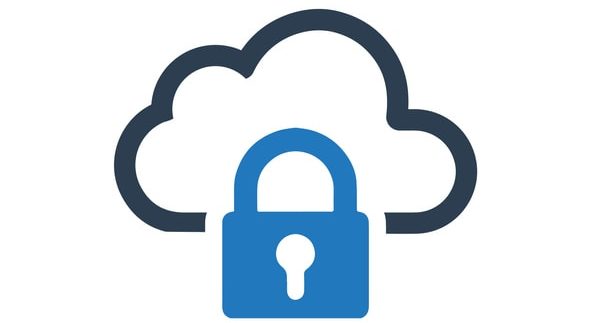Protect Your Video Content With a Secure Streaming Solution
Private and secure video hosting is essential for all broadcasters. At Dacast, we understand that need. In today’s world, businesses simply can’t afford to compromise. In short, you need a secure streaming solution.
And yet the threat environment continues to become more and more serious. Every year, security professionals are measuring an increase in piracy, hacking, and other digital attacks. When content security can make or break your business, using a secure streaming solution is not optional. It’s a necessity.
This blog will look at how businesses are using secure video. Next, we’ll review some of the key features of a secure online video platform. We’ll finish by sharing how to access these features through a secure streaming solution today.
How businesses use secure video today


Many kinds of businesses and organizations need a secure streaming solution. In particular, some groups who should consider security an absolute necessity include the following sectors:
- Medical institutions
- Universities and schools
- Corporations
- OTT and media businesses
- Intellectual privacy and piracy
- Lawyers
- Government
Today, more and more businesses are using video streaming platforms to host and share content. Both live streaming and VOD (Video-On-Demand) are incredibly powerful tools. Businesses and enterprises of all kinds use them to boost revenue, communicate, and build an audience.
Case-in-point: here are two short examples. First, Microsoft estimates that it avoided annual costs of $13.9 million by investing in a video training platform. That amounts to an ROI (Return on Investment) of 569% on its initial investment in the system.
Another related case study comes from Striv.TV. Striv built its business using Dacast’s video APIs to provide video services to high schools in the American Midwest.
Both of these examples are dependent on a secure streaming platform with API access. As Streaming Media noted in a recent analysis, video APIs are increasingly important for developing new services. A live video API enables you to integrate between an OVP and existing intranets, authentication measures, and management systems.
Key features for a secure streaming solution


A secure streaming solution needs to include certain features to be suitable for professionals. Let’s look at 7 of these key features now.
Keep in mind: your security plan should include a combination of multiple of these features. In other words, they work the best inconjunct, rather than separately!
Note: Dacast streaming solutions include all of these features–at all plan levels!
Password protection
This first feature is simple but essential. Password protection allows you to restrict video and live stream access to whoever has your selected password. This is a great way to quickly launch private and protected videos and share them with a select audience.
Password protection is also an ideal way to share content with executives (59% of who would rather watch a video than reading text). Finally, it’s a great way to test content among a smaller audience, stream restricted content to partners and collaborators, and work with individual clients.
Geographic (IP) restrictions
According to the research, piracy costs the U.S. economy more than $20 billion per year. One of the best ways to stop piracy is via “geographic restrictions.” This feature allows you to “whitelist” or “blacklist” certain countries based on a range of IP addresses. That way, the platform automatically blocks anyone attempting to watch your video from a country on the blacklist.
Conversely, anyone attempting to watch from a country on the whitelist can gain access to the video or stream. This feature allows broadcasters to easily block pirates, competitors, and malicious actors may be operating from a different country. And that’s another essential feature of a secure streaming solution.
Referrer restrictions


Next, let’s look at referrer restrictions. As the name implies, these are similar to geographic restrictions.
However, these don’t work based on IP address. Instead, they work based on the “referrer.” The HTTP referrer is a piece of metadata sent with a website request that identifies the webpage that linked to the video being requested.
Using this feature, you can create a “whitelist” and a “blacklist.” Instead of countries, these lists will be websites. Websites that are authorized to share your content should be whitelisted. Known pirate websites, competitors, and other malicious actors can be blacklisted.
Overall, referrer restrictions are another important layer in a secure streaming solution.
SSL encryption for secure payments
Today, more and more businesses are directly monetizing their video. By 2021, the live streaming industry could reach $70.05 billion. However, the costs of cybercrime could reach $6 trillion by the year 2021.
A secure streaming solution should include a paywall for taking payments. This security setup should include SSL encryption. SSL is the standard protection for financial transactions online. Your bank, the IRS, and more all use this method. You want to be sure to use it to protect your viewer’s payment information.
Copyright control
Another element of security is copyright control. When you share your videos and live streams on platforms like Facebook and YouTube, these companies gain rights to your videos.
These platforms are also targeted by file sharing and video download tools. That makes it surprisingly easy for people to copy your material illegally.
In contrast, a secure streaming platform like Dacast is a fully white-label secure streaming solution. The only branding included with your (live) streamed content is whatever you choose to include. Plus, all copyright remains yours when streaming over Dacast. By using a private, professional-grade OVP, it’s much harder for pirates to copy your content using free video download tools.
HTTPS delivery
One of the most malicious types of hacking is the “man-in-the-middle” attack. A MITM attack involves intercepting data in transit, and either copying it or modifying it. In some cases, these attacks can be used to impersonate a website or service.
These attacks may be targeted and maybe random. MITM attacks commonly occur at coffee shops and other public internet locations. And they can be extremely dangerous. In the video world, MITM can result in piracy, stolen trade secrets, leaked medical info, and worse.
HTTPS delivery uses encryption and validation to protect against MITM attacks. Through digital certificates, signatures, and encryption keys, HTTPS ensures two things. First, it ensures that you’re actually connecting to the right service. And second, it ensures that no one is able to eavesdrop on or modify content in transit. With a secure video platform that delivers video via HTTPS, you’re protected against most MITM attacks.
Secure CDN provider
CDN stands for Content Distribution Network. In short, these services are made up of a network of servers distributed around the world. These servers use complex load-balancing software to distribute video and other content to users globally.


Therefore, instead of concentrating load on a single server or a small group of them, a CDN distributes the load among a large number of servers. For users, this means content loads faster, buffers less, and has fewer lag problems.
However, a CDN also has security implications. For one, a CDN such as Akamai CDN protects you against DDOS attacks. A DDOS attack consists of flooding a server with requests to overwhelm it and cause a crash. CDNs make this strategy largely obsolete. They also provide a system of backups and redundancy that ensures content won’t go offline due to hardware failures or other issues. Therefore, a secure streaming solution should include a solid CDN.
Conclusion
From secure video upload to secure content delivery, Dacast’s secure streaming solution offers all the features we describe above. Plus, Dacast uses the industry-leading Akamai CDN to deliver all content. When enterprises utilize a variety of these features together, you can erect incredibly strong protection around your content.
If you’re ready for a secure streaming solution for live and VOD content, we think Dacast is a great option to try. But don’t take our word for it. You can try our 14-day free trial (no credit card required) to test it out yourself. We’d love to help you get started with our live streaming today!
Do you have questions or comments about any of the topics introduced in this article? We’d love to hear from you in the comment section below. We’ll do our best to get back to you as soon as we can.
For exclusive offers and regular live streaming tips, you can also join our LinkedIn group.
Thanks, and good luck with your broadcasts!


